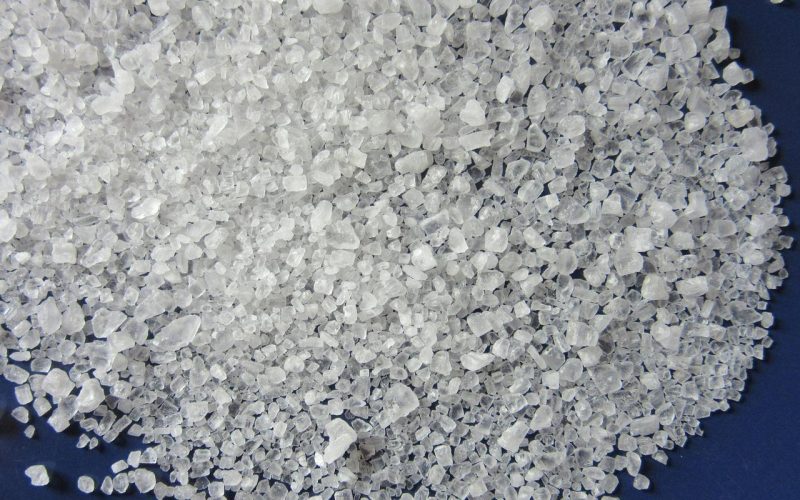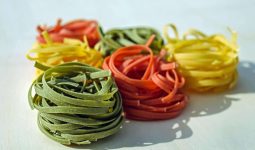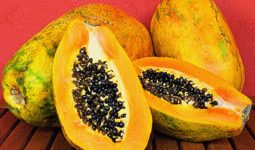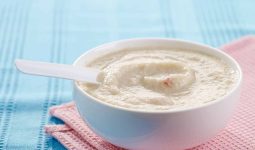Regarding cooking, one element will make or break your dish: salt.
Salt is an essential ingredient—it enhances the flavor of anything it’s added to, from meat and eggs to fruit and, yes, even sweets.
But sometimes, we all get a little carried away; adding too much to a dish can be overwhelming.
It seems easier to fix up a recipe when it’s too spicy or too sweet, but when it comes to how to fix salty food, there’s something about the taste of salt that permeates every element of a dish.
However, you don’t have to be stuck when your food is too salty. There are steps to fix salty food—the key is finding the right solution for your recipe.
But before we discuss how to fix salty food, let’s discuss the myth surrounding the starchy elephant in the house: the potato.
The theory is that if you add a few chunks of potato to too-salty foods and then remove them, the potato will absorb the excess salt.
However, author Robert Wolke revealed his scientific findings in his book “What Einstein Told His Cook: Kitchen Science Explained.” proof (with the help of a chemistry lab assistant) of this myth and explaining why it doesn’t work.
According to Wolke, while potatoes absorb some liquid and taste salty, they don’t remove excess salt any more than soaking in a dry kitchen sponge would; thus, they become salt-water logged.
Further, after testing the salinity of the salt water he used for his experiment before and after adding the potatoes, Wolke writes (emphasis added): “There was no detectable difference in salt concentration before and after putting the potatoes in it… The potato thing doesn’t work.”
Dilution is the Solution
A quick one on how to fix salty food like rice, meat, and vegetables can be made by rinsing off the salt that has not yet been absorbed.
Add a little water, sodium-free broth, or other salt-free liquid to dilute the salt concentration in soups, stews, and other liquid recipes.
However, this might thin out what you’re doing, and you won’t be able to boil it; otherwise, you’ll find yourself right back where you started.
To avoid this, prepare a porridge of roux or cornstarch and incorporate it into the soup as a thickener.
According to Rachael Ray’s website, she said you can even mash white rice and water to give the salt something else, and it can be used as a seasoning without diluting your recipe too much.
Adding a Little Acid
Something acidic, like vinegar or lemon juice, can be your salvation. They can help balance out when your food is a little too salty. Like salt, acid can be the main spice.
People often think that foods need salt when a little acid is enough (knowing that this is an excellent way to avoid too much salt in foods). Acid alone will not resolve salinity, but it can mask it.
Use a squeeze of lemon or a drizzle of mild vinegar to mask some of the string salt taste with a new flavor.
The acid will be better expressed in salted potatoes or salted fish.
Go for something versatile like white wine vinegar, and don’t overdo it: you don’t want anything salty or sour.
A Creamy Comeback
Adding a creamy component can also help fix salty food by changing the taste perception and making the dish’s flavor seem milder.
Creamy ingredients can prevent saltiness in certain foods, and when added in liquid form to a liquid recipe, they can thin it out a bit.
If you are making a sauce, adding milk or heavy cream can thin it out; You can even turn tomato sauces, pesto, and more into cream sauces as a form of rescue.
Sour cream or low-fat plain yogurt may work better for other recipes. Add them to chili, tomato dishes (like stuffed bell pepper mix), casseroles, and more.
With additions like avocado or sour cream, an overly salty chicken taco can gain texture and a little oomph.
Even a creamy-finished low-sodium cheese, such as Swiss, Monterey Jack, or ricotta, can offset the salty taste of another ingredient.
Turn an overly salty chicken breast into smothered chicken or toss ricotta into salty mac and cheese.
Soak It Up
Since potatoes won’t remove the salt, adding salt-free ingredients can distribute the salt better or prevent saltiness.
Add extra vegetables (yes, including potatoes), low-sodium rinsed beans, or salt-free cooked rice.
There is also an Indian cooking technique, chhaunk, a tempering technique where aromatic ingredients and/ or spices are prepared in fat, such as oil or ghee (clarified butter).
You can use this technique with aromatics to use their flavors to counter salt levels.
Even after preparing the food, you can add ingredients to tone down the salty taste.
The avocado will contrast with the overly salty taco meat. Did you add too much salt to your burgers? No problem.
Try the peanut butter and pickle burger with low-sodium peanut butter and bread-and-butter pickles.
Sprinkle in Some Sugar
Foods that are too salty can often be balanced with sweetness. Sugar can help round out flavors, as salty and sweet compete.
About bread and butter pickles, you can occasionally balance these somewhat salty meals with some sugar.
A pinch of sugar (brown or white), honey or molasses, or the addition of a sweet ingredient can sometimes balance out a salty meal.
Many spice blends contain sugar, which gives them a complex yet balanced flavor profile. This makes sugar a good choice for saving during food preparation.
Under Season Your Sides
If preserving your main course proves more difficult than expected, serve your dish with lightly spiced sides to reduce the salty taste.
A quick béchamel or tomato sauce and over-salted chicken or broccoli can balance out the whole dish.
In addition to unsalted rice, you can also serve it with salted protein to make the rice taste like the main course.
Sprinkle in Starch
Some chefs suggest that adding starchy ingredients can help absorb the salt. However, this advice is debated in the culinary world, as absorption is usually negligible.
While the jury is still out, you can try the following tips for soaking up some salty goodness:
Add raw, uncut, and unpeeled potatoes to your savory dish. The potatoes are thought to extract some of the salt and distribute the starch throughout the dish, thinning it further. Discard the potatoes when they are tender.
Add unseasoned cooked rice, pasta, quinoa, or couscous. These ingredients usually take on the recipe’s flavor and can dilute the salty taste.
Double Your Recipe
If in doubt, double your recipe without adding salt, then season as desired. This is a particularly good solution for something you can easily freeze for later.
Make a new recipe batch, then slowly add the over-salted batch until you get the desired taste.
Put some plain green leafy veggies on the plate. Veggies tend to take on existing flavors, which helps dilute excess seasoning.
Add soft vegetables like broccoli or cauliflower. Vegetables with a little flavor will absorb some of the flavors that exist in the dish.
Usually, adding one more ingredient is all you need to bring the flavors together and make your dish work.
How to Fix Salty Food— Soup
It can be quite embarrassing to prepare the soup of the day and find it too salty. To prevent your soup from being salty, try the following suggestions:
- Slowly add a little water or unsalted broth.
- Add green vegetables like celery, onions, white beans, cauliflower, or leeks.
- Add potatoes or pasta to the recipe.
- Increase the amount of the main ingredient in the soup.
- Increase the fat content with cream, butter, soft cheese, or olive oil.
- Sprinkle with a pinch of sugar or simple syrup.
- Make a portion without salt and add in the salted soup for balance.
How to Fix Salty Food— Meat
A salty steak can be unpleasant when your guest expects juicy, tender, and flavorful meat. Prevent your guests from having a salty surprise by following these tips for neutralizing salt in meat:
Remove the salt with a basting brush or damp paper towel if it gets over-salted during the marinating process.
Rinse raw meat with excess salt under running water for a few seconds to remove salt grains.
If you discover salt during cooking, under-season the sauces or accompaniments you plan to serve the meat.
Sprinkle a little sugar over the seasoning you plan to use for the meat.
Melt a piece of unsalted butter over the meat. Serve the meat with a starchy side dish like rice, potatoes, or polenta.
Add a cream-based sauce or topping to increase the fat content.
How to Fix Salty Food — Vegetables
Vegetables often taste bland and can benefit from a sprinkling of salt, but what do you do if you sprinkle too much salt? Here are some options for fixing salty vegetables:
Accompany your vegetables with a soft cheese such as mozzarella or ricotta.
Toss the vegetables in the unsalted cream sauce to mask the salt.
Use these vegetables in another dish that does not contain salt, and prepare a new quantity of vegetables for the dish you will be serving.
Seasoning Tips to Avoid Excess Salt
Although remedies for salty food can be helpful, they are not foolproof, and, of course, the best option is to avoid excess salt.
Pay attention to the ingredients you use. Very salty ingredients, like canned stocks, may mean you do not need to add as much salt.
Always use low-sodium or no-sodium versions so you can control your sodium content.
Never directly substitute one type of salt for another when following recipes.
Table salt granules are smaller than kosher salt, so if a recipe calls for kosher, use kosher or measure out much less table salt than necessary.
And while the season is crucial, it only matters if you taste it as you go.
And don’t forget the salty ingredients you’ll add later or get at the end, like parmesan cheese, capers, Worcestershire cheese, and more.
Finally, if you cannot taste as you go for food safety reasons (raw meat or eggs, for example), remember that a lack of seasoned food is much easier to repair than the reverse.
An over-salted food doesn’t have to be the death of the dish. Try to do what you can to avoid over-salting your recipe, but in case of a salty mishap, try some tips on how to fix salty food to neutralize salt in cooking and get on with your meal without anyone noticing.
Ensure your dish is in order with your guests, and take notes for next time.








